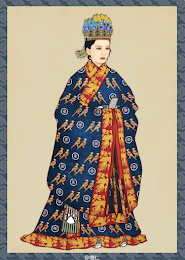For my 3D project i am exploring the ancient china dyeing technique where i will use one of the natural pigments that was used very often (Turmeric).
Why turmeric ?
I choose the yellow colour because represents one of the most used colour by the emperor in China, being often used to decorate royal palaces, altars and temples. Being yellow an imperial colour in traditional Chinese colour symbolism (already referred in previous blog posts), also represents the late summer season, power, royalty and prosperity. Yellow represents the earth in traditional chinese culture.
My intention with this dyeing it is not just dye all the piece but also explore and experiment a traditional tie dyeing technique used in the old days.
Tie dyeing was already used 1000 years ago (3rd to 4th century) , known as “skein tie” in the ancient time, being a traditional textile dyeing technique in the Southwest China, i decided bring to my project that essence and try reproduce the techniques that were used. It is possible to create flowers, plants, birds, mammals, fish, insects, folk characters and symbols, most of which are wishes for auspiciousness and good luck. The 1,000 or more tie-dye designs also reflect Bai history, culture, customs and aesthetic preferences. Having both decorative and practical applications, tie-dyed fabric is fashioned into both clothing and items of interior decor.
Photo credit: Yunnanadventure.com
Reference
The Skull and Sword. 2021. Tie-Dye History and Its Uses in Various Cultures | The Skull and Sword. [online] Available at: <https://www.theskullandsword.com/tie-dye-history-and-its-uses/> [Accessed 31 August 2021].
Elbe Textiles. 2021. Dye-ries: Yellow. [online] Available at: <https://elbetextiles.com.au/blogs/news/dye-ries-part-1-yellow> [Accessed 31 August 2021].







































